Walking is something most people never have to think about. Each step comes naturally, one after another, without a second thought. But for people who use prosthetic legs, every step can feel different. Making walking feel natural again is one of the biggest goals in modern prosthetics.
One important part of this process is called gait symmetry. Simply put, gait symmetry means that both sides of the body move as evenly as possible when a person walks. When gait symmetry is good, walking feels easier, looks better, and puts less strain on the body.
Today, thanks to real-world data and advanced prosthetic technology, we can measure gait symmetry better than ever before. This helps prosthetists and users work together to find the best fit and the best function.
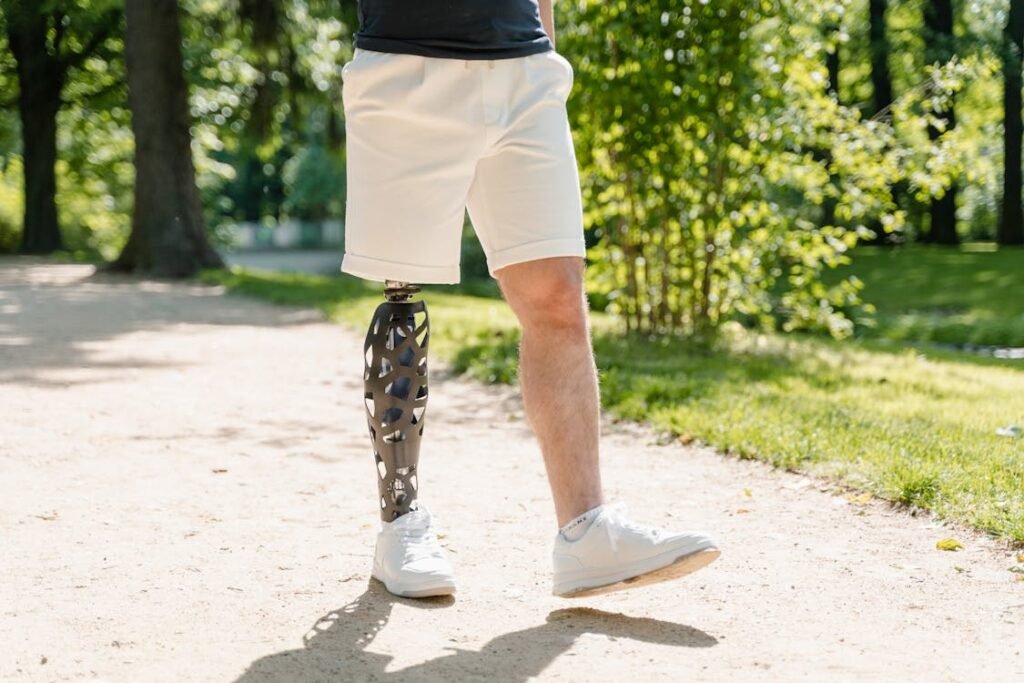
What is Gait Symmetry and Why It Matters
Understanding Gait Symmetry
Gait symmetry simply means that the right and left sides of the body move in a similar way when walking. In a natural, healthy walk, both legs swing forward with the same rhythm, land with the same amount of force, and push off the ground with equal strength.
The hips, knees, and ankles move in harmony, and the arms swing to balance the motion.
When a person has an amputation and uses a prosthetic leg, this natural balance is often disturbed. The body may favor the sound limb, causing uneven steps, extra effort, and even pain over time.
Poor gait symmetry can lead to sore muscles, back pain, and faster wear and tear on joints. In some cases, it can even cause problems in parts of the body that were never injured.
This is why measuring and improving gait symmetry is so important. A prosthetic is not just about walking again. It is about walking better, walking easier, and walking in a way that protects the whole body over time.
Why Traditional Measurement Methods Fall Short
In the past, gait symmetry was measured in clinics under very controlled conditions. People walked on treadmills with markers on their legs while cameras and computers recorded their movement. These methods, while useful, had big limitations.
First, people often walk differently in a clinic than they do in real life. The pressure of being watched, the feeling of being in a medical setting, and the flat, perfect surfaces of clinics do not match the real-world challenges of sidewalks, hills, crowds, or slippery floors.
Second, clinical tests usually happen just once or twice. They provide a quick snapshot of gait at a certain moment but miss the full picture.
A person’s walking can change based on how tired they are, what shoes they are wearing, or even what mood they are in. A one-time clinic test cannot capture all of that.
As a result, prosthetists and users sometimes made decisions based on incomplete information. Even if someone walked well in a test, they might struggle at home, at work, or outside.
To truly help users achieve better gait symmetry, we needed better data — real-world data collected during everyday life.
The Rise of Real-World Data in Gait Analysis
Thanks to advances in technology, we can now collect information about walking while people live their normal lives.
Smart sensors, wearable devices, and even connected prosthetics allow real-time tracking of how someone moves through their world.
Instead of a few minutes in a lab, we can now measure hundreds of thousands of steps across days, weeks, or even months.
These devices can capture every small detail — how long each step takes, how hard the foot hits the ground, how high the knee lifts, and even how much the hips rotate.
They send this information to smartphones, computers, and prosthetists who can review it with the user.
This shift to real-world data changes everything. Instead of guessing or relying on memory, users and clinicians have hard facts.
They can see patterns, track improvements, and notice problems early. Adjustments to the prosthetic can be based on real needs, not guesses.
Real-world data also empowers users. When they can see their own progress, it builds confidence. They know they are moving in the right direction.
They can set goals, celebrate milestones, and become active partners in their rehabilitation journey.
How Advanced Prosthetics Help Improve Gait Symmetry
Modern prosthetics are designed with gait symmetry in mind from the very start. Today’s devices are lighter, stronger, and smarter than ever before.
Some prosthetic legs even have built-in microprocessors that adjust the stiffness of the knee or ankle based on the terrain. This means a smoother, more natural walk without the user needing to think about it.
Other prosthetics use hydraulic systems that provide a more fluid motion. Some even have tiny motors that add power during the push-off phase, helping the prosthetic leg keep up with the sound limb.
At Robobionics, we focus on designing prosthetics that don’t just restore walking but make walking easier and more natural.
Our work includes creating components that feel more responsive and matching them with real-world data tracking systems. This combination helps users achieve better gait symmetry not only in clinics but also on busy streets, in crowded markets, and during everyday life.
Real-world feedback also speeds up the fine-tuning process. Instead of waiting weeks between adjustments, users can share walking data with their prosthetist remotely. Small tweaks can be made faster, keeping the user comfortable and confident every day.
Why Gait Symmetry is About More Than Looks
Some people think gait symmetry is only about looking normal. While appearance can be important for confidence and social ease, the real benefits run much deeper.
Good gait symmetry protects the body. It reduces stress on the lower back, hips, knees, and ankles. It prevents long-term injuries. It saves energy, making it easier to walk longer distances without fatigue.
It improves balance, reducing the risk of falls. And perhaps most importantly, it gives users freedom — freedom to move, to work, to travel, and to enjoy life with fewer limits.
By focusing on gait symmetry and using real-world data, we are not just helping people walk. We are helping people live.
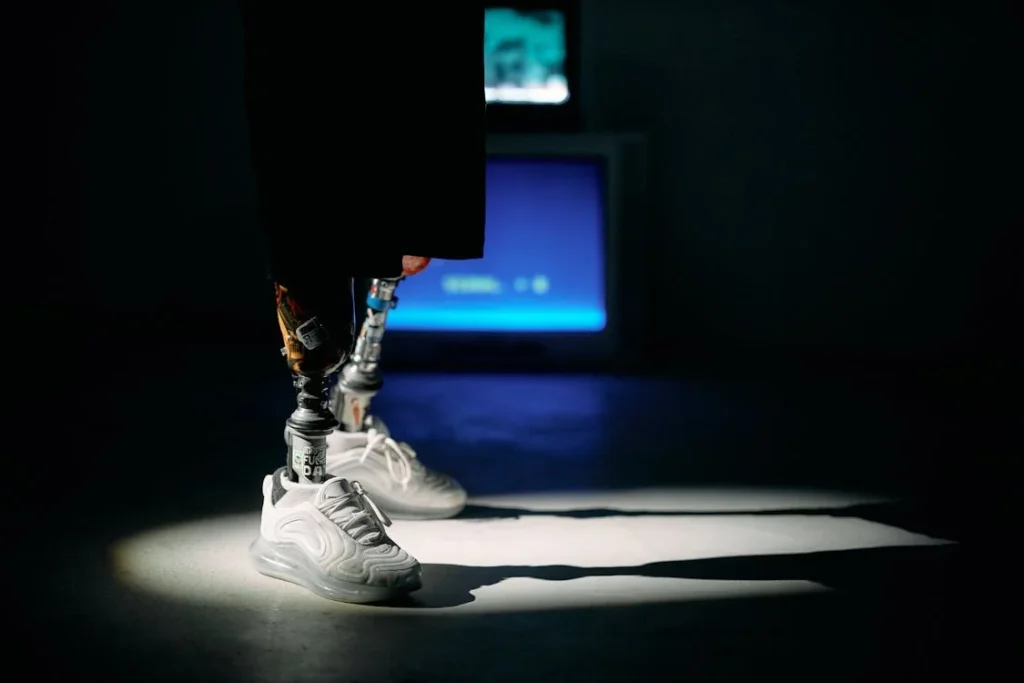
How Real-World Data is Collected and Used in Gait Symmetry
Collecting Data Through Wearable Technology
The way we collect real-world data has changed dramatically over the last decade. Today, wearable technology plays the biggest role.
Tiny sensors can now be attached to a prosthetic limb, a shoe, or even worn around the waist. These devices track how the body moves throughout the day without getting in the way.
Most wearable devices use accelerometers and gyroscopes. Accelerometers measure how fast the body moves. Gyroscopes track rotation and balance.
Together, they create a full picture of how each step looks and feels. Some advanced devices also include force sensors that measure how much pressure is applied with each step.
What makes these tools powerful is that they can track millions of steps over time. They work while the user shops for groceries, walks to work, or plays in the park. There is no need to be in a lab.
There are no wires or cameras. The person lives their normal life while the device quietly collects valuable information in the background.
This new approach is much closer to real life. It captures how people actually walk when they are relaxed, distracted, tired, or even excited.
These little changes matter because gait symmetry is not just about walking well once; it’s about walking well all the time.
Types of Devices Used for Gait Monitoring
Different tools are used depending on the level of detail needed. Some devices are as simple as a smart insole placed inside the shoe. These measure pressure and timing with every step.
Others are wearable bands or patches stuck to the thigh, calf, or waist. They track limb position, speed, and movement angles.
Some prosthetic systems even come with built-in sensors that send real-time walking data directly to a mobile app.
At Robobionics, we believe in making technology invisible to the user. When a device feels natural and easy to wear, people forget it is even there. This way, the data collected is pure, real, and useful.
Data security is also a big part of this technology. Personal walking data must be kept private. Systems are designed with strong protections so that users can trust that their information stays safe and confidential.
How Real-World Data Improves Prosthetic Tuning
Once real-world data is collected, it becomes a roadmap for improvement. Prosthetists can look at the data to find small problems that might not be obvious during a clinic visit.
Maybe one step is a little shorter than the other. Maybe the user leans slightly to one side. Maybe the prosthetic foot strikes the ground too hard.
Using this information, small changes can be made to the prosthetic device. The alignment can be adjusted. The stiffness of a foot or knee can be fine-tuned.
Socket fit can be improved. Even small adjustments can have a big impact when they are based on real evidence.
Over time, users can see the difference for themselves. Walking becomes easier. Pain decreases. Balance improves.
Steps feel smoother and more natural. Best of all, users stay motivated because they can see their progress clearly.
Real-Time Feedback: A Game Changer for Gait Training
Some modern systems even allow for real-time feedback. This means that while a person is walking, they can get gentle reminders if something needs correction.
For example, a slight vibration can alert them if they are favoring one side too much. This helps train better habits much faster.
Real-time feedback is like having a coach by your side all day long. It helps users build better walking patterns without needing constant clinic visits.
It also gives users a sense of control over their own recovery, making the whole journey more empowering.
Real-World Data Beyond the Clinic
Real-world gait data is not only useful for tuning prosthetics. It also opens doors to better healthcare overall. Doctors can use the data to spot problems early, like signs of arthritis, overuse injuries, or muscle weakness.
Therapists can create more personalized exercise programs. Insurance companies can better understand patient needs, leading to better support and coverage for advanced prosthetics.
For researchers and developers, real-world data provides a goldmine of information. It helps guide the design of the next generation of prosthetics.
Every step taken by users today teaches us how to build better solutions for tomorrow.
At Robobionics, we are deeply committed to learning from real-world experiences. Every piece of data helps us make prosthetics that are not only more functional but also more human — devices that truly become a part of the user’s life, rather than just a tool they have to manage.
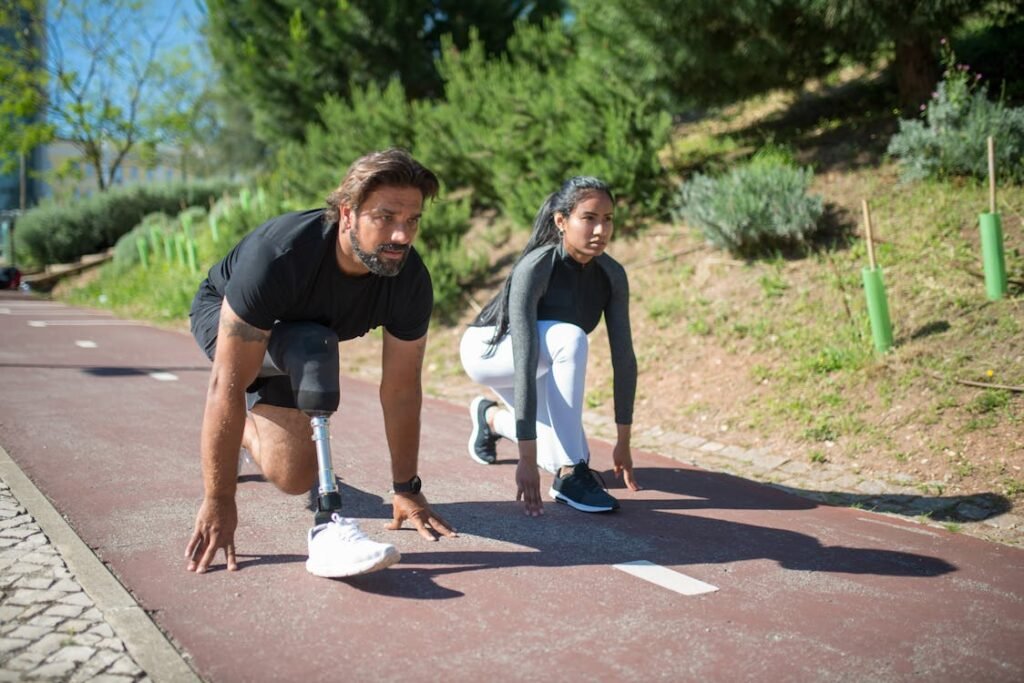
Challenges in Achieving Perfect Gait Symmetry and How Technology Helps
Natural Differences Make Perfect Symmetry Hard
Even in people with two natural legs, walking is not perfectly symmetrical. Tiny differences always exist between the right and left sides.
A slight favoring of one leg, a small variation in step length, or even a subtle tilt in posture is completely normal. Our bodies are not machines; they are alive, dynamic, and constantly adjusting to the environment.
When a person uses a prosthetic leg, these small differences can become much bigger. It is not just about walking on two legs again.
It is about teaching the body to trust the prosthetic, to balance weight evenly, and to move naturally. Muscles, nerves, and even the brain have to relearn how to walk.
This is why expecting perfect gait symmetry may not always be realistic. Instead, the goal is to find the best balance possible — a gait that is smooth, comfortable, safe, and sustainable over time.
Socket Fit: The Foundation of Good Gait
The socket is the part of the prosthetic that connects directly to the residual limb. If the socket does not fit well, everything else becomes harder. A loose socket can cause rubbing, pain, and insecurity.
A tight socket can cut off circulation and create pressure sores. Either way, the body will naturally favor the sound limb to avoid discomfort, hurting gait symmetry.
Good socket design is a careful blend of art and science. It must match the shape of the limb closely while allowing for small changes that happen throughout the day, like swelling or shrinking.
Advances like 3D scanning and digital modeling are making sockets more accurate and comfortable than ever before.
At Robobionics, we work closely with users to create sockets that feel like a true extension of the body, because when the socket fits right, everything else — from balance to stride — becomes much easier.
Muscle Strength and Balance
After an amputation, the muscles on the affected side often weaken. Without the natural limb to move and balance, certain muscle groups can shrink or lose their natural rhythm. Regaining strength is critical for walking evenly.
However, building strength takes time, patience, and smart training. It is not just about lifting weights. It is about retraining muscles to work together again in a way that feels natural.
Modern rehabilitation programs now use a mix of traditional exercises, virtual reality, and gamified tasks to make this process more engaging.
Home-based systems, like those supported by Robobionics’ gamified rehabilitation platform, encourage users to stick with their therapy while having fun.
Users can perform simple games that train balance, posture, and coordination without needing constant clinic visits.
Fear of Falling
Fear can be a hidden enemy when it comes to gait symmetry. Many prosthetic users walk cautiously to avoid falling.
They take shorter steps, avoid putting full weight on the prosthetic, and tense their muscles unnecessarily. This protective behavior is understandable but often creates poor walking patterns over time.
Building confidence is just as important as building strength. Real-world data can help here by showing users how well they are actually walking.
When people see their improvements in numbers and graphs, they start to trust their prosthetic more. They realize that their steps are solid, their balance is strong, and their risk of falling is lower than they feared.
New prosthetic designs also help. Microprocessor knees and ankles that adjust to different surfaces, like grass or gravel, provide greater stability.
Smart feet that automatically adapt to the walking speed or incline of a surface make sudden slips less likely. All of this reduces fear and encourages a more natural, symmetrical gait.
Changing Environments and Terrain
Walking indoors on a flat, smooth floor is one thing. Walking outdoors on uneven sidewalks, ramps, curbs, grass, or gravel is something else entirely.
Real life presents a variety of walking challenges that can throw off gait symmetry at any moment.
Traditional prosthetics often struggled to adapt quickly to these changes. A foot designed for smooth surfaces might trip on a bumpy sidewalk.
A knee that worked well at slow speeds might feel unstable when trying to run to catch a bus.
Today’s advanced prosthetics are better prepared for real life. Components like adaptive ankles can sense changes in terrain and adjust the angle of the foot automatically.
Some knees adjust the resistance depending on whether the user is walking fast, slow, uphill, or downhill.
Real-world data also helps by identifying where users struggle most. If the data shows more instability during outdoor walking, therapists can create targeted training programs. If the data reveals a limp when carrying groceries, adjustments can be made to improve load-bearing balance.
By addressing these real-world challenges, prosthetic users can achieve more consistent gait symmetry no matter where life takes them.
Psychological Factors
Walking is not just a physical act. It is also deeply tied to emotions, self-image, and confidence. Some users may feel self-conscious about their prosthetic. Others may carry emotional scars from the trauma that led to their amputation.
These feelings can affect how a person walks. Shy or anxious users may hunch their shoulders, take hesitant steps, or avoid putting full weight on their prosthetic.
This emotional hesitation can disrupt gait symmetry just as much as a poor socket fit or weak muscles.
Addressing emotional wellness is key. Counseling, peer support groups, and positive reinforcement during rehabilitation all make a difference. Technology also helps here.
Seeing clear proof of progress through real-world data builds pride and optimism. Users realize that they are not defined by their prosthetic. They are strong, capable, and improving every day.
At Robobionics, we view every user as a whole person — not just a limb or a leg. That is why we combine physical, emotional, and technological support in every solution we offer.
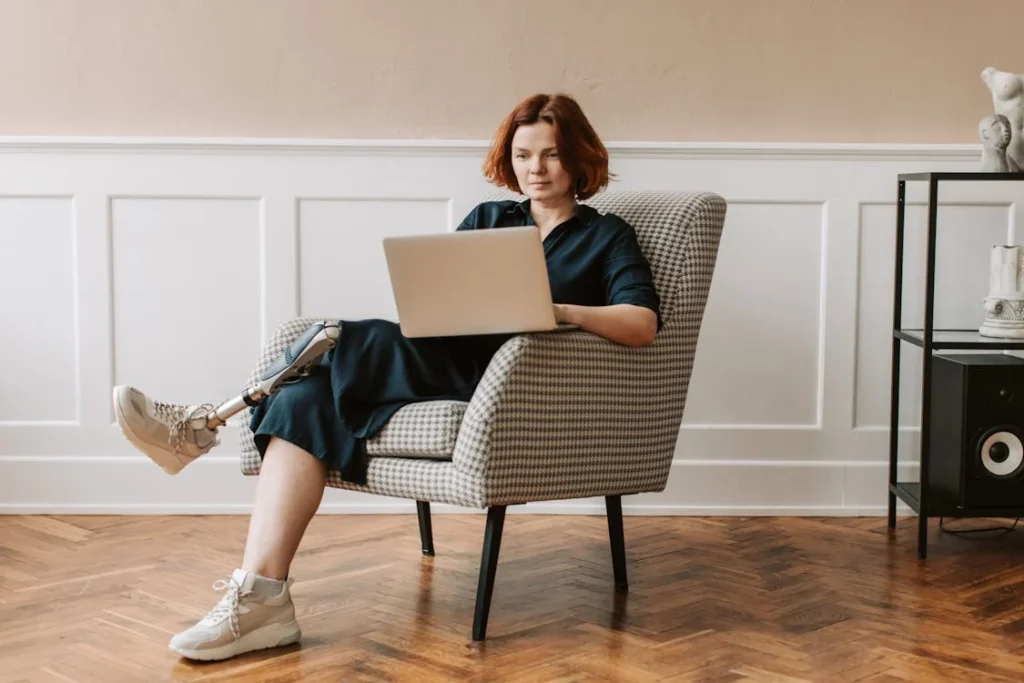
Real-Life Success Stories: How Real-World Data Transformed Gait Symmetry
A New Beginning After Amputation
Anil, a 32-year-old teacher from Pune, lost his right leg below the knee after a road accident. After months of recovery, he was eager to return to work. He received his first prosthetic limb at a local clinic. During checkups, he walked well on flat surfaces. Everything seemed fine inside the clinic walls.
But outside, he struggled. He felt unstable walking up stairs and across uneven playgrounds at school.
Sometimes, he leaned too much on his sound leg, causing lower back pain. He felt tired after short walks, and his confidence dropped.
Using real-world gait monitoring, his prosthetist placed a wearable device on his prosthetic leg. Over two weeks, it tracked every step he took, showing that Anil shortened his prosthetic step without realizing it. His push-off power was weaker on the right side, and his posture tilted forward.
Armed with this data, his prosthetist made small alignment tweaks to the prosthetic foot and suggested targeted strengthening exercises.
The difference was almost immediate. Anil walked taller, felt more stable, and his back pain lessened. Within a month, he returned to full-time teaching, even supervising outdoor games again.
Stories like Anil’s remind us why real-world data matters. Without it, these hidden struggles might never come to light.
Returning to an Active Lifestyle
Sonia, a 45-year-old fitness enthusiast, underwent a transfemoral amputation after a severe infection. Determined to keep moving, she trained hard with her prosthetic leg. In the clinic, she performed great.
But during daily life, she noticed something was off. Running felt awkward, and she avoided slopes because they made her feel unbalanced.
Her prosthetic included smart sensors that collected walking and running data every day. The data revealed that while
Sonia’s walking gait was mostly symmetrical, her running stride was uneven. Her prosthetic knee did not flex quickly enough, forcing her to compensate with her hip.
After adjusting the hydraulic settings in her microprocessor knee based on her real-world running data, Sonia regained her natural stride.
She now participates in community marathons and leads fitness classes, inspiring others with limb loss to stay active.
Without data captured in her real running environment, these fine issues would have remained hidden, limiting her dreams.
Small Changes, Big Differences
Ravi, a 60-year-old retiree, used a simple mechanical prosthetic for many years. He walked short distances around his home but avoided long outings because he tired easily.
When he visited Robobionics for an upgrade, we suggested installing a data logger onto his current prosthetic before recommending changes.
The real-world walking data showed uneven timing between his steps. His prosthetic side moved slower and spent less time in the air.
His weight shift was late, causing inefficient energy use. These were small asymmetries, but they added up, draining his stamina.
By switching to a lighter foot component and fine-tuning the socket alignment, Ravi’s energy use dropped dramatically.
His new walking pattern became smoother and more symmetrical. For the first time in years, he comfortably completed a family trip to a nearby hill station, walking on trails he once thought were lost to him.
Small tweaks, based on real steps, gave him a big part of his freedom back.
Learning to Trust Technology
One challenge some users face is trusting technology enough to believe in the data it provides. Shalini, a university student, was initially skeptical.
She didn’t believe a few graphs on a screen could really tell her anything about her walking.
When her prosthetist showed her the exact moments where she hesitated or favored one leg, she was amazed. She could see her fear points clearly: stepping off a bus, climbing stairs, walking across grassy patches.
With this knowledge, her therapy sessions became more focused. She practiced step-downs from curbs, balance exercises on soft ground, and quick weight shifts.
Slowly, her walking confidence grew. The next set of data showed big improvements — fewer hesitations, stronger push-offs, better balance.
Today, Shalini walks across campus without a second thought. She carries books, climbs stairs, and weaves through crowded hallways with ease. Trusting the real-world data helped her trust herself.
A New Approach to Rehabilitation
In the past, rehabilitation often followed a fixed path. Step one, step two, step three — the same for everyone. But people are not the same. Each person’s body, mind, and goals are different.
Real-world gait data allows for truly personalized rehabilitation. Some users need more focus on balance. Others need help with speed or endurance.
Some need emotional support to overcome fear. Real-world data shows what each person needs, making rehabilitation more precise and more successful.
At Robobionics, we see data not as numbers, but as stories. Every step tells us what the user needs. Every pattern shows us where to help.
Technology is not replacing human care — it is making human care smarter, kinder, and more effective.
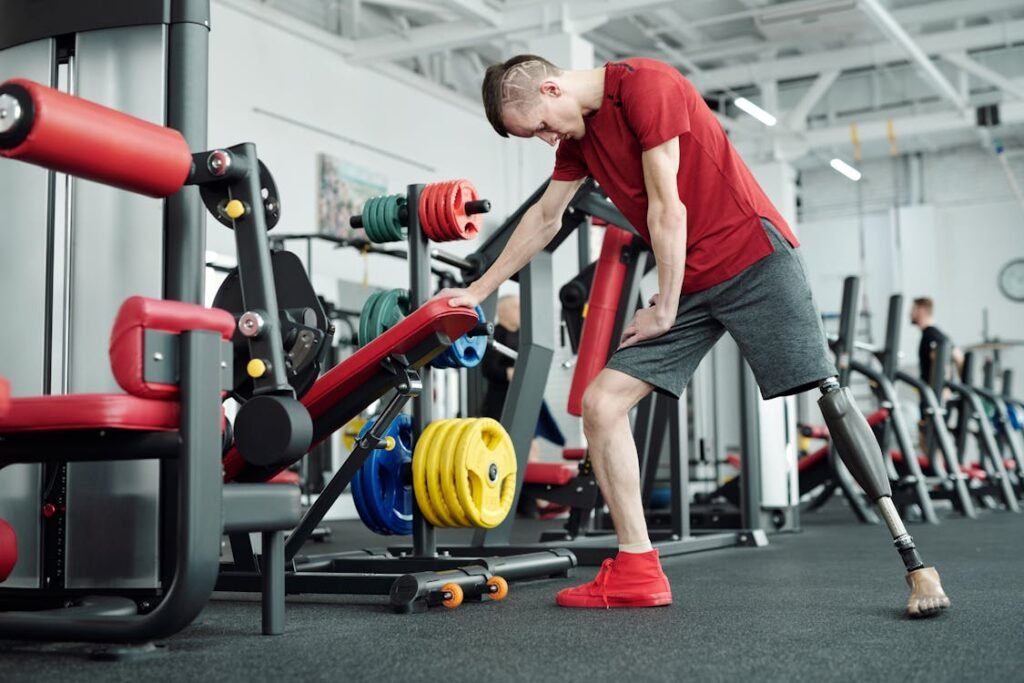
The Future of Gait Symmetry: Smarter Prosthetics and Intelligent Support
The Role of Artificial Intelligence in Gait Analysis
Artificial Intelligence, or AI, is no longer just a buzzword. It is already shaping the future of prosthetics and gait improvement.
AI works by analyzing huge amounts of walking data and finding patterns that are too small or complex for the human eye to notice.
For example, AI can detect tiny shifts in balance long before they become serious problems. It can predict which users might face joint strain in the future based on their current walking style.
AI can even recommend personalized training exercises based on the user’s daily activities, not just clinic visits.
In the near future, prosthetics themselves will come with built-in AI systems. These smart prosthetics will not just react to the user’s movement but will learn from it.
They will adjust their behavior automatically to support better gait symmetry without needing manual tuning.
Imagine a prosthetic knee that notices you are tired after a long day and softens its resistance automatically to make each step easier.
Imagine a foot that senses you are walking uphill and changes its shape slightly to give better grip and balance. This is not science fiction — it is happening now, and it is only getting better.
At Robobionics, we are excited to work on next-generation prosthetics that combine AI with real-world feedback, helping users walk smarter, safer, and stronger.
Machine Learning and Personalized Adaptation
Machine learning is a branch of AI that focuses on teaching computers to learn from data. In gait symmetry, machine learning can be used to create personalized walking models for every user.
Instead of using a “one-size-fits-all” setting, machine learning lets the prosthetic device build a unique profile for the individual.
Over time, it learns how the user moves across different situations: walking indoors, outdoors, uphill, downhill, fast, slow, and everything in between.
When a prosthetic leg knows the user this well, it can provide exactly the right support at exactly the right moment.
This means better balance, less fatigue, and more confidence. It also means that prosthetists can focus less on guesswork and more on fine-tuning devices based on rich, continuous feedback.
This kind of learning never stops. As the user becomes stronger or tries new activities like hiking or running, the prosthetic adapts along with them. It is like having a living assistant, always growing with the user’s needs.
Smart Prosthetics: The Next Big Leap
Smart prosthetics are already changing lives. These are devices that do not just move — they think, sense, and respond.
Some smart prosthetics use microprocessor-controlled knees that adjust thousands of times per second. Others have ankles that shift angles to match walking surfaces in real time.
Some systems combine sensors, motors, and artificial intelligence to deliver the smoothest walking experience yet.
But the future promises even more. Prosthetics will soon be able to connect directly to smartphones and smartwatches, giving users instant feedback on their gait symmetry.
They will offer real-time coaching, suggesting tips like “push a little harder with your prosthetic side” or “keep your hips level.”
Advanced smart sockets will also play a big role. These sockets will adjust their tightness automatically based on swelling, activity level, or temperature changes, keeping the fit perfect all day long.
At Robobionics, we are committed to making these smart systems affordable and accessible, not just for elite athletes but for everyone who wants to walk better and live freer.
Virtual Rehabilitation and Telehealth
The future of gait training is not limited to hospitals and clinics. Virtual rehabilitation is bringing therapy into people’s homes.
Through apps, games, and wearable sensors, users can practice balance exercises, strength training, and gait drills anytime, anywhere.
Telehealth services allow users to share their real-world data with prosthetists and therapists remotely. Adjustments, advice, and support can happen through video calls, saving users long trips to clinics.
This also makes rehabilitation faster and more personal. If the data shows a sudden change — maybe due to a fall, illness, or a new pair of shoes — the prosthetist can step in quickly to adjust the prosthetic or recommend changes in therapy.
Virtual rehabilitation programs supported by Robobionics combine gamified exercises with real-time feedback, making rehab fun and keeping users motivated to continue improving every day.
Breaking Barriers with Community Support
Technology is only part of the future. Community is just as important. Peer support groups, virtual communities, and mentorship programs connect prosthetic users with each other.
Hearing from someone who has walked the same hard path can inspire hope and courage. Sharing tips, struggles, and successes builds bonds and spreads knowledge faster than any textbook ever could.
In the future, smart apps may also connect users based on their walking goals, helping them form walking groups, fitness challenges, or virtual meetups. The power of walking together — even across miles — should never be underestimated.
At Robobionics, we believe that building a supportive community is just as vital as building smart prosthetics. Technology gives users better steps. Community gives them strength.
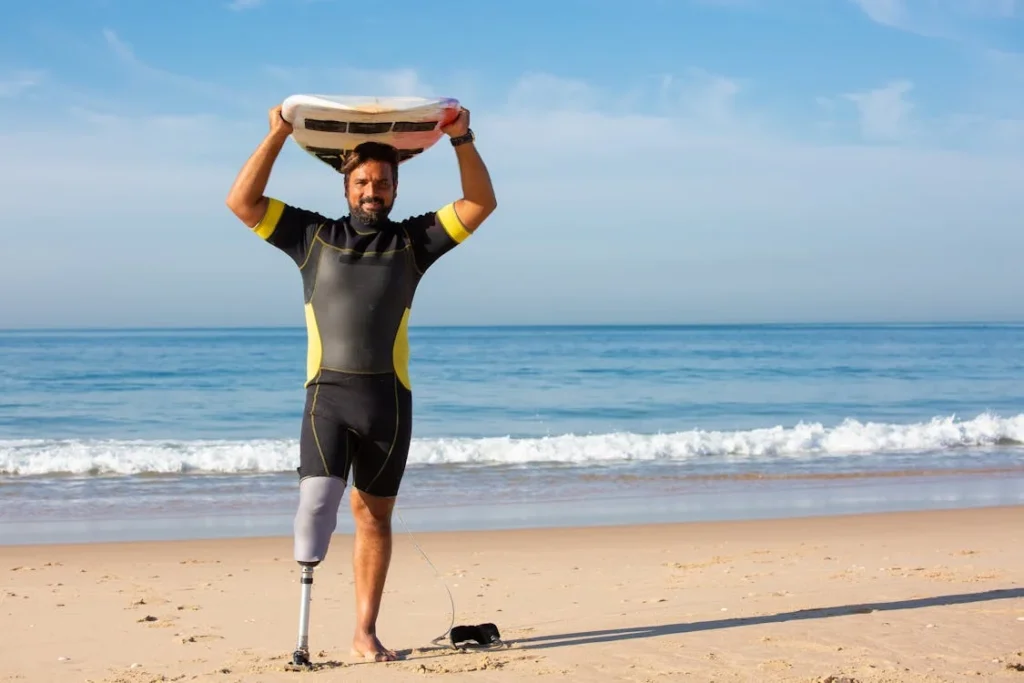
Conclusion
The journey to better gait symmetry is not just about technology. It is about people — about giving them back their freedom, their confidence, and their dreams.
Real-world data has opened a new window into the daily lives of prosthetic users. For the first time, we can truly see how people move when no one is watching. We can catch small problems before they become big ones. We can personalize prosthetics not just to fit the body but to fit the life the user wants to live.
Advanced prosthetics, powered by artificial intelligence and machine learning, are becoming smarter every day. They are learning to walk with their users, to grow with them, and to support them through every step — whether across a busy street, up a hiking trail, or onto a dance floor.
But even with all this technology, one truth remains: it is the human spirit that drives every step forward. No machine can replace the determination, courage, and strength it takes to face the world after limb loss. Technology can offer tools. It can offer support. But it is people who make the journey meaningful.
At Robobionics, we are honored to walk this journey with our users. Every prosthetic we build, every smart system we design, every real-world data project we launch is fueled by one goal — helping people move freely, live boldly, and reach for everything they deserve.
The future of mobility is bright. With real-world data guiding us, smarter prosthetics supporting us, and human courage leading the way, there are no limits to what is possible.
The best steps are yet to come.



